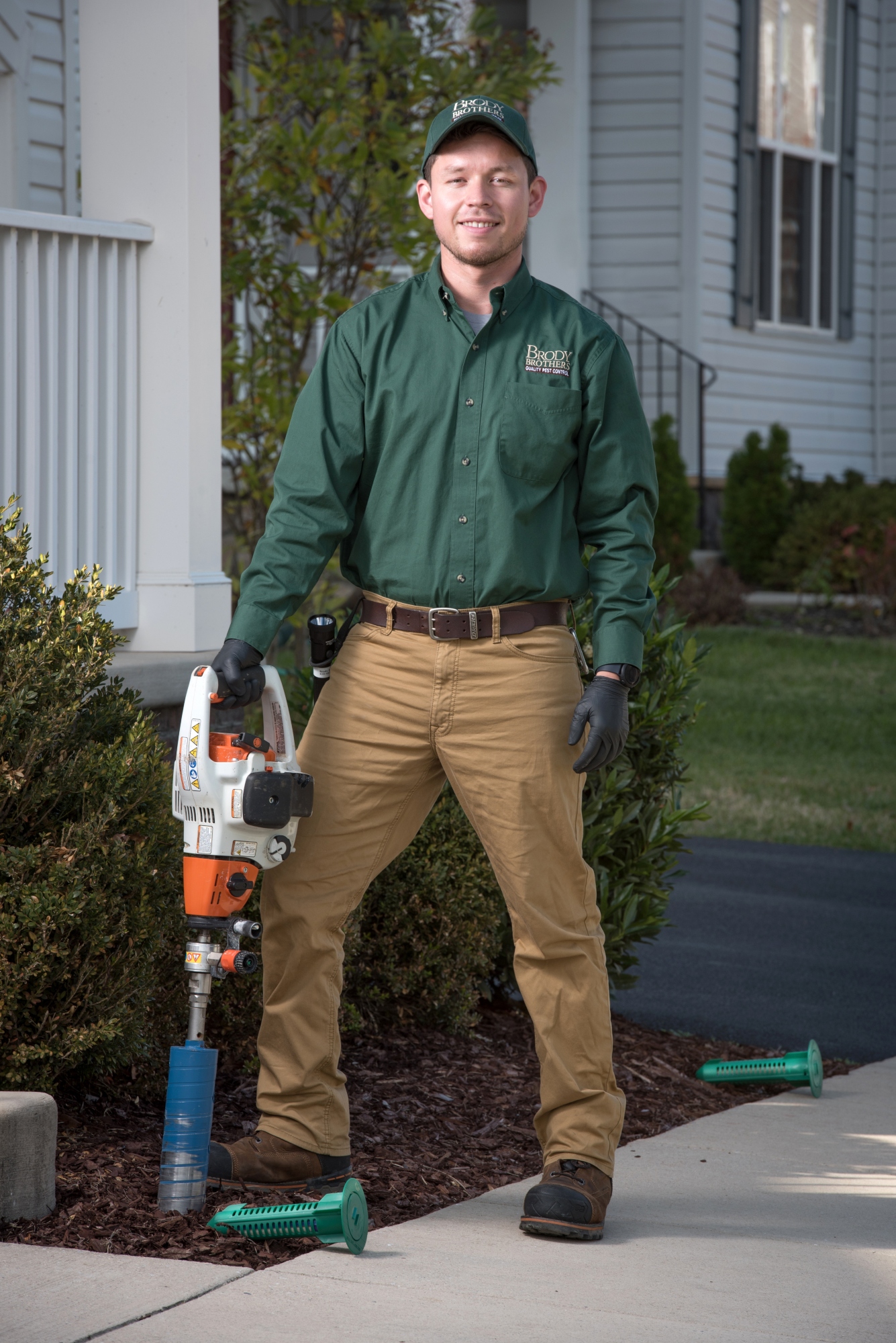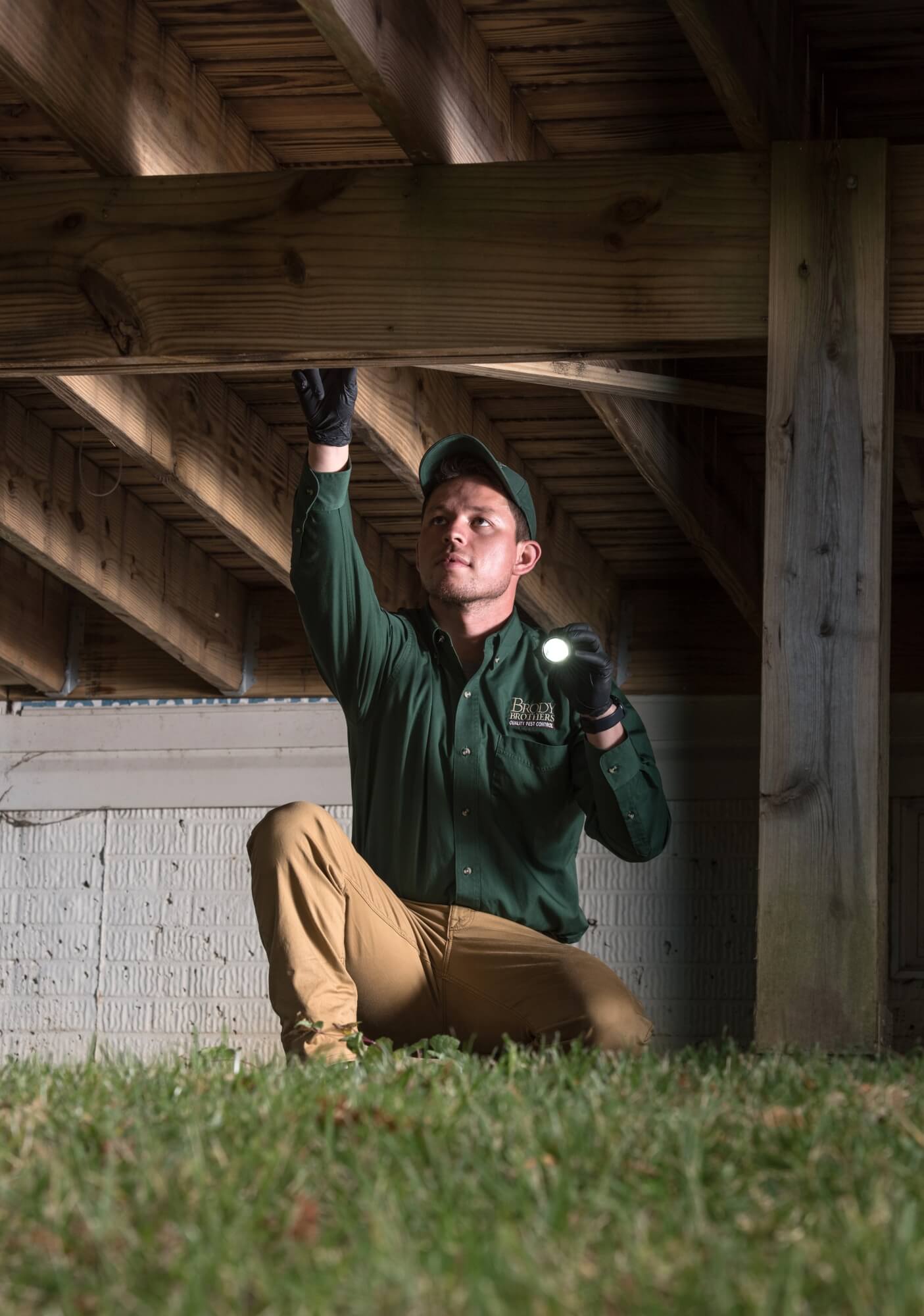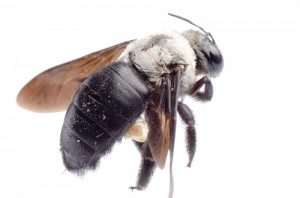Many people mistake carpenter bees for bumble bees. The two species are similar in size and coloring, but the carpenter bees have a shiny black abdomen without hairs while the bumble bees have hairy abdomens. Male carpenter bees have yellow faces; females have a dark face and a dense brush of black hairs on their hind legs.
Carpenter bees also have different habits than bumble bees:
- They are solitary bees and do not live in colonies
- The males spend much of their time buzzing around the nest and defending it
- Carpenter bees may reuse and expand upon an existing nest
Only female carpenter bees can sting, and they are unlikely to do so unless attacked.


Carpenter bees make nest in a variety of wooden structures:
- Trees (especially rotting or soft woods)
- Eaves and/or ceilings of a house, garage or shed
- Wood trim
- Wooden decks and porches
They prefer untreated wood, but will also make a home in pressure treated lumber.
Female carpenter bees are the actual workers. They tunnel into the wood by creating a perfectly circular, ½-inch-diameter entrance hole that looks like it was made by an electric drill. They also leave a small pile of sawdust by the entrance.
Once the bees have gone in about an inch, they make a 90 degree turn and begin building tunnels inside the wood. They can build nests of up to 6 to 12 inches a year; some tunnels extend up to 10 feet after several years of reuse.
The female carpenter bees create 6 to 8 brood chambers in which they lay their eggs. The brood chambers contain bee bread, a mixture of pollen and regurgitated nectar on which the larvae feed. The new adults emerge in August and the young males and females hibernate in the tunnels over the winter.

As a Home Protection Plan customer, if you’re not satisfied with our pest control service, we will service your home at no additional cost until your issue is solved or receive your money back from your last scheduled service.

The tunneling that carpenter bees do can weaken the structure of the wood over a number of years and will allow moisture inside, causing decay.
If you have carpenter bees attacking your wooden structure, you can try to eliminate them by:
- Applying a pesticide at night inside the hole
- Sealing the hole with wood putty or a wooden dowel after the bees are no longer active (or in the winter)
- Close up any old nail holes or screw holes in wood so that the bees will not use them as an entry point
- Paint wood surfaces with oil paint and or polyurethane to prevent bees from drilling into the wood
If you want to make sure that your wood is free of carpenter bees — and that it stays that way — contact Brody Brothers to come out and do a pest inspection. We’ll check for bees and other insects that can damage your home and your property, and provide the professional solutions to deal with them all.


